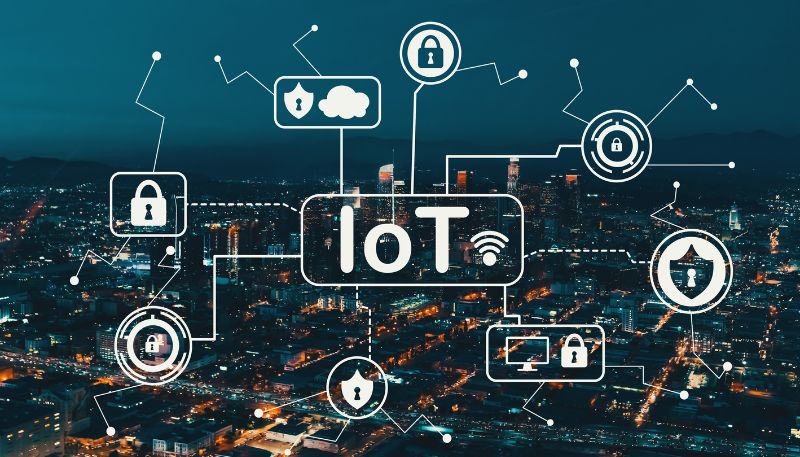
The Internet of Things (IoT) enables devices and objects to connect to the internet and communicate with each other. IT connects the physical and digital world and helps monitor, alter and control physical parameters as required.
The physical parameters could be temperature, pressure, level, flow, volume, movement, or other measurable parameters. The sensors and actuators identify the change in state and communicate to the digital world with wired or wireless technology.
The server or processing unit processes the collected data to have sensible interpretation and initiates an action. The action could be displaying a parameter, sound an alert or alarm, command an actuator such that it changes or alters the physical parameter.
Choosing the right sensors, devices, communication protocols and Technology is an important aspect involved in effective use of IoT for successful business outcomes. It is never one size fits all. Every application is unique and needs a different combination of technologies to be adopted.
The exciting part of IoT is that it has many applications – it gives the technologist and IoT practitioners a chance to be creative and innovative while they work to achieve the end goal.
Some of the benefits of the IoT include.
- Increased Efficiency: By automating processes and using data to optimize operations, the IoT can increase efficiency in a variety of industries, from manufacturing to agriculture.
- Improved Customer Experience: The IoT can help businesses better understand their customers and provide personalized experiences based on their preferences and behaviors.
- Enhanced Safety and Security: By using sensors and monitoring systems, the IoT can help prevent accidents and detect potential security threats.
- Cost Savings: By automating processes and reducing waste, the IoT can help businesses save money on energy, maintenance, and other expenses.
- Innovation: The IoT has the potential to enable new products and services that were previously impossible or impractical, leading to new business models and revenue streams.
Overall, the IoT has the potential to revolutionize the way we live and work, providing new opportunities for efficiency, innovation, and growth.
Few IoT application cases are as below.
- Smart home applications: IoTs application in home is one of the widely used. It includes monitoring and control of home appliances, lights, thermostats, audio / video systems, surveillance, safety systems and interlinking of these to the user actions, movement, and mobiles. With advancement in IoT, home automation platforms from Google, Apple and others.
- Industrial applications: The application of IoT in the industrial domain is so huge that there is a separate subset of IoT called IIOT (Industrial Internet of things) used commonly. Most applications are around Man – Material – Machine monitoring and control. It helps achieve visibility on productivity, efficiency, and output. Also helps reduce wastage, maintenance, losses. The implementation involves making the sensors / machines / assets smart and communicable using wired or wireless technology as a retrofit. Alternatively, if the existing machines have an ability to communicate the implementation is done such that the data is centralized using OPC server and standard industrial protocols.
Examples: Work force monitoring, Asset tracking, Operational equipment Efficiency (OEE).
- Smart city applications: Streetlight automation, Smart metering of utilities (Electricity, water, Gas), Transportation (Toll management is a good example). It helps achieve optimal usage management, capacity planning and better quality of service.
- Renewable energy / Alternate energy: Monitoring of generation, usage and management of Solar energy, Wind energy, Battery Management Systems, and others. Efficient IoT based systems helps to achieve an optimal output and improving the ROI.
- Wearables: Advancement in semiconductors has helped to have smaller electronics with higher processing power and low power usage. With use of these advance chips – there are small formfactor wearables that are designed.
Examples: Fitness wearables like Fitbit, Apple smart watch, Health wearables like Freestyle Libre, Apple air tags, BLE tags.
- Connected and Smart cars: Advance Driver Assistance Systems (ADAS), Vehicle Tracking Systems, advance Infotainment systems, Safety and Smarter breakdown assistance and maintenance systems.
- Agriculture: With use of battery-operated long range wireless sensors, it is now possible to monitor the crops and control the supply of water and fertilizers to an agricultural field. IoT has also been effectively used to monitor the wellbeing and movement of livestock.
- Service applications: Advance applications consumer portals like Amazon, Big Basket, Dominos that track and monitor the end-to-end life cycle from an order to delivery with payment and after sales support have multiple aspects that use IoT.
Overall, IoT has the potential to revolutionize the way we live and work, providing new opportunities for efficiency, innovation, and growth.
Source-right is a leading outsourcing partner for IoT solutions. It has hands on expertise in enabling solutions and consulting for remote equipment monitoring, Indoor asset monitoring, Employee monitoring, wearables, IIoT, battery operated solutions and renewables.



